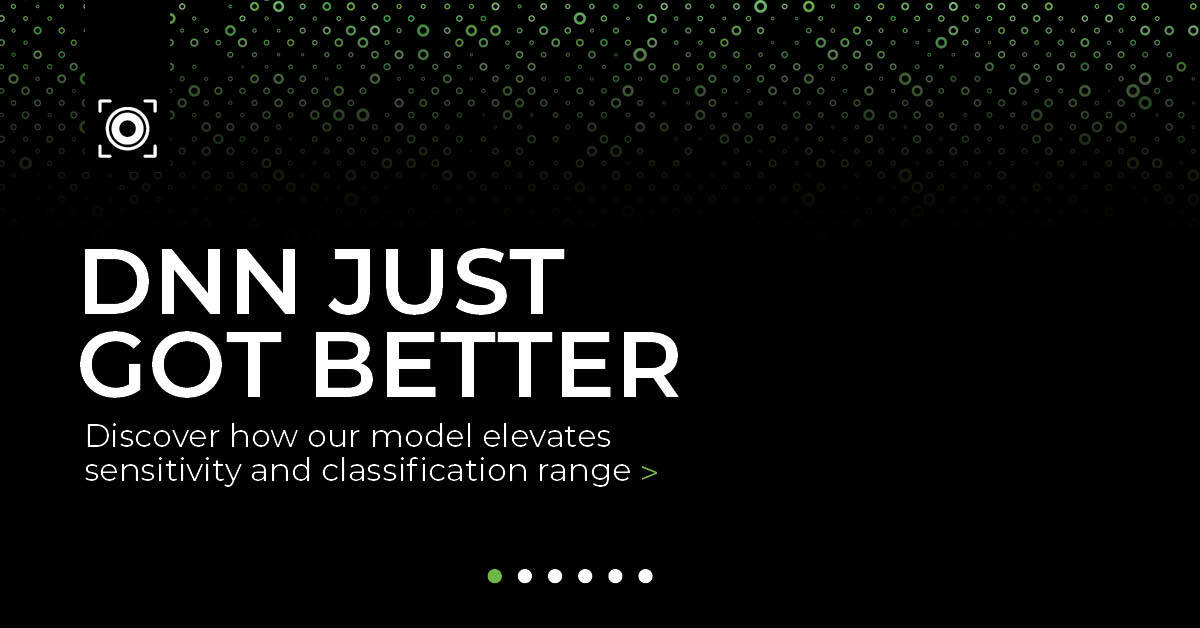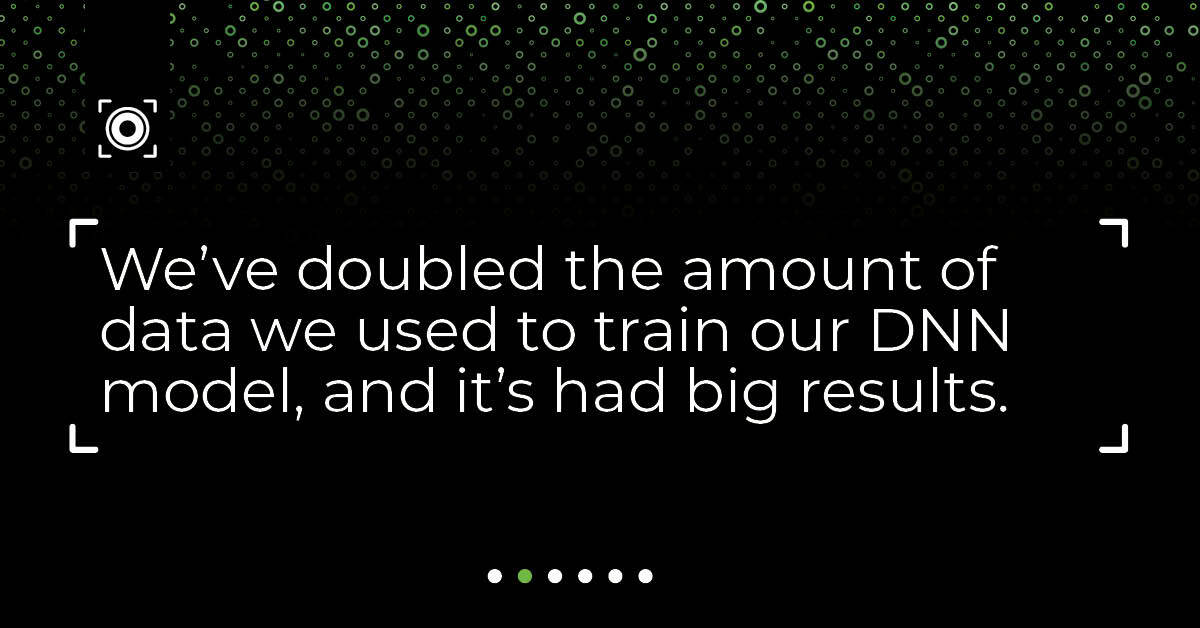Careless amateur or deliberate attack, the drone threat comes in many shapes and sizes. Managing it isn’t straightforward, and when the stakes are high every second counts. That’s why, here at Robin, we never stop pushing for enhanced performance in a fast, unpredictable world.
In creating our 3D CUAS (Counter Unmanned Aerial Systems) radar, IRIS, we set out to produce a system that doesn't compromise. That’s why IRIS is packed with innovations, from holistic design to phased array and now, Deep Neural Network (DNN) technology.
Since introducing DNN, a machine learning technique, in 2022, we’ve made significant leaps in both the classification range and sensitivity of IRIS. In this blog, we’ll explore what DNN is and how our newest model is helping to redefine airspace safety.





What is a Deep Neural Network (DNN)?
The machine learning technique that mirrors the human brain
Deep Neural Networks, or DNNs, are machine learning models inspired by the human brain's neural architecture.
They’re essentially mathematical functions consisting of a huge number of parameters, which are organised in layers. With additional layers and deeper networks, these models can achieve sophisticated pattern recognition.
Just as a human brain learns to distinguish shapes, colours, and textures, a DNN can differentiate between various object classes in data, making it a powerful tool for rigorous optimisation in technology.
Neural networks have previously been used to identify almost everything, from dogs to cats, and IRIS's DNN model works similarly. It analyses cutouts of radar images to detect the specific micro-doppler signatures of drones.
In our case, DNNs analyse radar data, allowing IRIS to classify drones from other objects with even greater accuracy.
Classifying drones with conviction
Using micro-doppler and DNN to distinguish drones
To classify drones and give the earliest possible warning, our CUAS radars, IRIS and ELVIRA, use micro-doppler and DNN. Here’s how that works.
In essence, radars transmit a signal that returns a reflection. Backed by 40 years of radar science, Robin's radars are carefully calibrated to analyse certain properties of this reflection down to finite detail.



Micro-doppler refers to movements within a moving target. Radars like IRIS can detect speed differences within the reflecting target, that's how it identifies the presence of rotor blades and rotating parts.
With micro-doppler, IRIS can differentiate between the movement of a bird’s beating wing and the rotation of a drone propeller. We strengthen classification accuracy, and other performance indicators, with deep neural networks (DNN).
Our new DNN Model
Discover the improvements our latest model brings to IRIS
Our latest DNN model brings significant improvements to our 3D drone radar. With it, you can now either enhance the classification range or sensitivity.
We’ve doubled the amount of data we used to train our DNN model, and it's had big results. The latest model, shipping with new IRIS systems, gives users an additional, targeted layer of control.
- Customisable Thresholds: Because each deployment has unique goals and settings, users can now finetune the balance between sensitivity and range. In busy environments or high-traffic airspace, the radar’s sensitivity may be reduced to limit the number of false alarms, at the cost of a couple of hundred meters in classification range. In open spaces with little distractors, the sensitivity of the system can be increased and classification ranges stretched by several hundreds of meters.
- Extended Classification Range: Our new DNN model has boosted the overall classification range of IRIS to approximately 150% and tripled the classification range for small drones, such as the DJI Mavic Mini 2.
- Enhanced Sensitivity: At Robin, we’re proud to have innovated technologies that bring false alarm rates — the classification of a non-drone as a drone — to an all-time low. For IRIS, that just got even lower. When adjusting the threshold so that the classification ranges for larger drones remain similar to the previous ranges, the classification ranges for smaller drones still double. At the same time, false alarms are significantly reduced by 80%.
a data-driven learning cycle
Collect, train, evaluate
The radar image cutouts we use to train our model are collected from various real-world deployments. This means every operational setting, be it a field test or demonstration, supplies valuable data that contributes to an ongoing cycle of learning and improvement.


- Collect: We collect images of radar cutouts that we know to be drones, these are called drone plots. The more variety we have, the broader the learning curve for our DNN model.
- Train: We train our model by feeding in these drone plots. The model then learns to recognise and filter out drones by their micro-doppler signature.
- Evaluate: We analyse how our model performs with diverse field tests, some at our own test location, and others at recognised events such as the CUAS Sandbox 2024. We also perform detailed statistical analysis, considering numerous environmental and testing factors to understand performance and decide what direction to push data collection into next.
This loop — where data collection, training, and evaluation are repeated continuously — allows our DNN model to refine performance even more.
That means IRIS is in a constant cycle of evolution and, like us, never stops learning.
DNN and the drone threat
Staying one step ahead
With sophisticated drone technologies on the rise, the risk to public and private security is becoming more and more pressing.
Machine learning is just one of the ongoing innovations that keep our radars ahead of the threat. DNN has made IRIS an even more dynamic, optimised radar solution.
By training the radar with ever-expanding datasets and incorporating machine learning innovations, we’re strengthening IRIS’s ability to keep up with—and stay ahead of— these evolving threats.
Stay tuned for more updates as we continue to iterate, innovate and evolve for safer, more secure skies.
